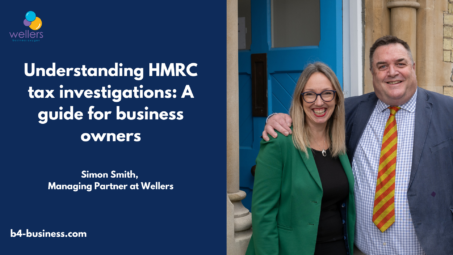
A summary of the Budget 2018 – was it a missed opportunity?
The key announcements from the Chancellor’s latest Budget briefing.
Written by: Stuart Crook
The UK and the EU continue to acknowledge that a no deal Brexit is a distinct possibility, albeit one they both want to avoid. The issue of a potential Northern Irish border has stalled discussions and appears to have handed control of the negotiations to the EU side of the table. Did Philip Hammond miss a trick in his annual budget to wrestle power back?
No deal planning doesn’t just have to be about borders and logistics. The Chancellor could have also set out a post Brexit no deal vision. He could have stated an ambition to eliminate tariffs on manufactured goods, to enhance tax relief on business investment and further reduce capital gains tax.
Why do this? The EU would then have realised the prospect of a very competitive economy and tax jurisdiction close to its shores in the event of a hard Brexit. As a bargaining tool it might have made them more likely to compromise and so provide greater negotiating power for the UK.
Below is a summary of the main news from the Budget impacting on individuals and SMEs:
1. Personal tax highlights
Despite plenty of speculation pre-budget, Entrepreneurs’ relief is not being withdrawn. The minimum qualifying holding period will be extended from 12 months to 24 months for gains arising on or after 6 April 2019.
The personal allowance will rise from April 2019 to £12,500 from the current threshold of £11,850. This comes in one year earlier than was originally announced. As an example, a typical basic rate tax payer could benefit from a £130 per annum reduction in their tax bill. The personal allowance will be frozen in 2020/21 and then increase in line with the CPI thereafter.
The higher rate threshold will increase in April 2019 to £50,000 from the existing £46,350. Again this is a year earlier than was originally planned and will also remain at the same level in 2020/21.
These tax savings came with a hike in the threshold at which National Insurance Contributions (NICs) fall from 12% to 2% however, thereby offsetting some of the gains from raising the higher rate income tax threshold.
Furthermore the rules were tightened in that for shareholders to benefit from the relief they will also have to be entitled to at least 5% of the distributable profits and net assets of a company alongside meeting the existing conditions already in place. This could impact on employees who have acquired shares through share schemes, such shares typically having restricted rights attached to them. As always, planning your exit well in advance is advisable and this should begin earlier following these changes.
The IR35 rules that currently apply to the public sector will be extended to the private sector. This is particularly relevant to consultants, freelancers and contractors. This is an anti-avoidance measure aimed at preventing individuals who in reality are employees but operate through a personal service company for tax benefits. The changes won’t come into force until April 2020 to provide sufficient time to prepare.
Elsewhere:
• The lifetime allowance for pension savings will increase in line with the CPI measure of inflation to £1,055,000 in 2019/20.
• Duties were frozen on fuel, beer and spirits.
• Air Passenger Duty will rise in line with inflation from April 2020.
• The national living wage will increase to £8.21 from the current level of £7.83 an hour.
2. What the Budget means for SME businesses
The annual investment allowance (AIA) will increase from the current level of £200,000 to £1 million. This will be effective from 1 January 2019 to 31 December 2020 providing businesses with a two year window in which to maximise this tax relief for qualifying investment.
The writing down allowances available on expenditure qualifying for and included within the special rate pool will reduce from 8% to 6% from April 2019. This will therefore reduce the rate at which a business will obtain tax relief for expenditure on special rate qualifying assets.
This is only likely to be an issue for SME businesses with existing assets given investment in any new special rate assets are likely to be covered by the increase in the AIA. Planning for your capital investments should form part of your annual accounts review.
Significantly for some early stage businesses there are changes to the research and development (R&D) tax relief. For a qualifying loss-making company under the SME scheme, the amount of repayable R&D tax credits will be restricted to three times the company’s total PAYE and NICs liability for that year. This could be particularly problematic for qualifying organisations with few or, no employees.
As of 1 April 2020, a 50% limit will be applied to companies on the proportion of annual capital gains that can be relieved by brought forward capital losses. However this will be subject to a £5m threshold meaning gains up to £5m will not be restricted.
Business rates are to be cut by a third for smaller retail properties, specifically those with a rateable value below £51,000. This will apply for two years as of April 2019.
3. What still needs to be addressed, but wasn’t in this Budget
Britain’s national debt stands at £1.78trn. According to the International Monetary Fund (IMF) we have long term liabilities of £5trn and assets of £3trn. That equates to a negative net worth of around £2trn!
If the UK is to pay down its debt and further reduce the interest bill which still costs the government £43bn a year, then the Chancellor will have to eliminate the budget deficit which stands at £25.5bn.
Given Philip Hammond finished his speech with the exclamation of, “the end of austerity” this won’t likely be achieved through spending cuts. Therefore readers should perhaps prepare themselves for the prospect of further tax rises coming in the future.
More in Accountants

Why having an audit can boost your business
Many directors will wince at the prospect of an audit, seeing it as a necessary evil to meet statutory obligations.

FRC Proposes Major Overhaul of Auditing Standards
In a bold move, the Financial Reporting Council (FRC) has unveiled proposed changes to auditing standards that could have a major impact on the financial world, according to chartered accountants and business advisors Whitley Stimpson.

Whitley Stimpson shines as finalist for top national award
Service Charge Accountancy specialist Jonathan Walton of Whitley Stimpson has been recognised for his outstanding work in the field by being shortlisted for a prestigious property industry award.
From this author

Budget 2024 review: A bitter pill for SMEs?
Tom Biggs, Partner at Wellers, the Oxford-based small business accountants, discusses the latest Budget and the impact it will have on SMEs.

Understanding HMRC tax investigations: A guide for business owners
Simon Smith, Managing Partner at Wellers, discusses what business owners need to know about tax investigations, including whether you could be a target.

Evolution and Growth for Oxfordshire’s Wellers
Simon Smith takes the helm as Managing Partner

